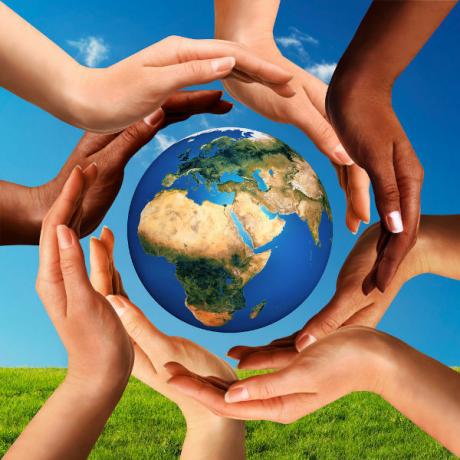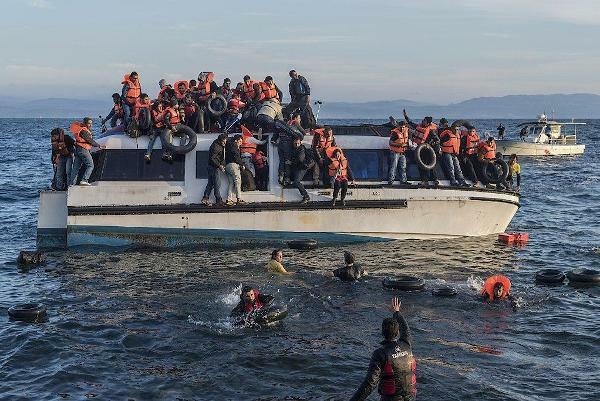One of the most embarrassing themes to Brazil, not only to Brazilian society itself, but also internationally, is the existence of the so-called child prostitution. Despite all the efforts of the State to face this problem, a hostile reality remains for many children - mainly girls – in the poorest regions of the country: according to UNICEF, in 2010 data, around 250,000 children are prostituted in the Brazil.
In general, child prostitution is the sexual exploitation of a child who, for various factors, such as poverty or lack of social and psychological assistance, becomes weakened. In this way, they become victims of grooming by adults who abuse minors, who now seek the easy and cheap sex, now they try to profit by corrupting the minors and leading them to the market of prostitution.
The facilitating aspects of this condition, in which childhood is seen to be destroyed, disregard the rights and need for protection of the child. In addition to the possible vulnerabilities arising from the socioeconomic situation - if not the main cause, certainly one of the most important - there are other aspects such as the child's own gender, a fact that would explain the greater vulnerability of girls, who are so exposed to violence against women, even in the environment familiar. This suggests that they are important aspects for the understanding of violence against children and others beyond those related only to poverty issues. The issue of gender would be intrinsic to a sociocultural model that, at times, as in the Brazilian case, can reproduce a naturalization of discrimination against women (as a result of sexist values), seen as an object devoid of value, conscience and freedom.
Thus, child prostitution should not be associated only with child's poverty condition, but consider the particularities of its manifestation. Also, in addition to poverty, the development of drug addictions lead these children to a deplorable situation and an extreme need for special care. To meet the impositions of chemical dependency that dominate them, they sell their bodies to get some money to buy drugs (or even accept to do programs with their own payment as payment damn it).
Another complicating factor in this issue is the so-called sex tourism, which consists of the arrival of several foreigners to regions such as the Brazilian Northeast in search of sex. Poor girls, who live in the outskirts and precarious regions around the big cities, occupy the main streets and avenues to live. offer as a cheap merchandise in this sex market that is established in tourist addresses throughout Brazil, mainly on the beaches Northeastern regions.
If, on the one hand, prostitution is still part of the Brazilian reality, it is important to highlight some advances in this fight. In Brazil, in 2000, the National Plan to Combat Sexual Violence in Children and Youth, as well as the National Day to Combat Child and Youth Sexual Abuse and Exploitation, celebrated in May 18th, the day an 8-year-old girl was abused and killed in 1973 in the state of Espírito Santo, causing national indignation. According to the Federal Government, this National Coping Plan is divided into six strategic axes, namely: Situation Analysis, Mobilization and Articulation, Defense and Accountability, Service, Prevention and Protagonism Children and Youth. This Plan is coordinated by the National Council for the Rights of Children and Adolescents (Conanda), as well as the State and Municipal Rights Councils in each region. In addition to these institutions, other spheres of monitoring and control were created, in addition to Criminal Courts specialized in crimes against children and adolescents. Also according to the federal government, in 2008 more than 3,500 people of various nationalities were gathered at the III Congress to Combat Exploitation Sex of Children and Adolescents, in Rio de Janeiro, a fact that marks an international sensitivity to this reality that affronts the Rights Humans.
Do not stop now... There's more after the advertising ;)
According to the UNICEF - United Nations Children's Fund website, in mid-2000 this body adopted the Optional Protocol to the Convention on the Rights of the Child, which deals with the sale of children, child prostitution and child pornography. Several countries have joined, such as the Brazilian government that promulgated such a protocol in 2004. This document not only highlights an international concern, but signals the attempt to create of mechanisms for mutual effort against these terrible forms of violence and exploitation against the kid. Throughout the text that introduces the points of this protocol, UNICEF points out that there is an agreement between the countries that “the elimination of the sale of children, prostitution and child pornography will be facilitated by adopting a global approach that takes into account the factors that contribute to the existence of such phenomena, particularly the underdevelopment, poverty, economic inequalities, the inequity of the socioeconomic structure, family dysfunction, lack of education, rural exodus...” (UNICEF, 2011, s/p).
This shows that the most effective position of the State in relation to this problem is not only urgent, but also has a certain complexity. It would not only be a matter of curbing the action of recruiters or potential clients of this type of prostitution, but fundamentally thinking about the care for minors and adolescents in the most diverse spheres: from health, through education, as well as the creation of clear opportunities for inclusion Social. It requires the need for psychological support and guidance for children in this condition, whether for those who are actually on the streets or for those who are despite having a family, they are in an inappropriate environment for their childhood and education as an individual (in view of the exploitation promoted in many cases by themselves country).
In short, it is up to the State to ensure the well-being of children and adolescents, especially those in a greater situation of social vulnerability. However, such vulnerability would be promoted not only by the lack of resources, but also by the cultural naturalization of discrimination, as in the case of girls seen as mere objects. Therefore, it is necessary to reflect not only on the role of the State, but on that of society itself, on their values and their ability to perceive the real nature of the logic of violence against kid.
Paulo Silvino Ribeiro
Brazil School Collaborator
Bachelor in Social Sciences from UNICAMP - State University of Campinas
Master in Sociology from UNESP - São Paulo State University "Júlio de Mesquita Filho"
Doctoral Student in Sociology at UNICAMP - State University of Campinas


